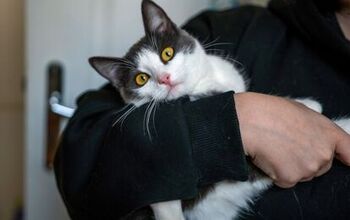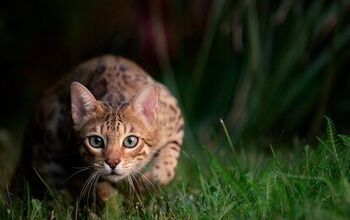Chinese Crested


About Chinese Crested
If you’ve been looking for a breed of dog that makes an excellent companion in a myriad of ways – avoids barking, gets along with children, and gets along with other dogs – you could do far, far worse than opt for a Chinese Crested. The Chinese Crested dog is considered among the best companion breeds for a number of reasons: not only for those mentioned, but for its appearance, general demeanor, and ability to perform tricks. In other words, acquiring a Chinese Crested for yourself and your family can be a great decision indeed.
There are two kinds of Chinese Crested dogs – the Powderpuff and the Hairless. Both types are odorless, non-shedding, and hypo-allergenic, which makes them a great dog for allergy sufferers. If you have the opportunity to acquire one for yourself and make it a part of your family, you’ll find it makes an ideal pet for households with small children and it’s a dog that won’t make strangers feel unwelcome. If there ever was a “house dog,” this is one.
The Chinese Crested dog is considered among the best companion breeds for a number of reasons.
Despite what its name suggests, many people do not believe that the Chinese Crested actually originated in China. For one, the Chinese Crested does not keep in line with a number of ancient Chinese dogs like the Pug or the Chow Chow. The Chinese Crested has too recent a history to be counted among those breeds in pure historical longevity.
Where, then, do Chinese Crested dogs hail from? Many believe it’s actually Africa, being referred to as an African Hairless Terrier in texts across the 19th century. (Note: Of course, the 19th century is far off from the origins of the more ancient Chinese breeds.) Because there is genetic evidence of being related to the Mexican Hairless, this further confuses the issue, although following the genetic line will probably lead you to form a more accurate opinion.
Those who do believe the Chinese Crested originated in China note that the Chinese Crested had a lot of maritime experience, being brought around by Chinese sailors. The truth is probably a combination of all of these, as the Chinese Crested was believed to have descended from African roots.
Although called “terriers” back in the 19th century, the pedigree of the Chinese Crested deserves to be more associated with the aforementioned Mexican Hairless breed. Because there are two types of Chinese Crested breeds – hairless and “powderpuff” – there is an argument to be made of a wide-ranging pedigree. But many historians believe the Chinese Crested breeds brought around by Chinese mariners in years past would have descended from the African hairless breeds already mentioned.
The actual ancestry of modern Chinese Crested dogs also is tied through the breeds in Europe and America, where they began their formal recognition and widespread fame in the 19th and 20th centuries.
As a very scrawny and small dog, a large diet is not needed. Because of this reason, nutritional impact must abound. Whole foods like lean meats and cuts of poultry will provide plenty of energy and nutrition. Treats are to usually be avoided except in training purposes.
The Chinese Crested is a highly trainable dog that is open and intelligent enough to learn a wide variety of tricks.
The Chinese Crested is a highly trainable dog that is open and intelligent enough to learn a wide variety of tricks. Because its temperament is patient and friendly, they make very trainable dogs and should be relatively easy for the beginner dog owner to “try a few things out.” It’s generally a good idea to train the Chinese Crested with positive reinforcement, as they are prone to becoming shy due to their size and temperament.
Weighing only up to about ten pounds, this is indeed a tiny breed – and one you’ll want to teach your kids to be very gentle with.
One of the main attractions of the Chinese Crested is its personality. Friendly, patient, and non-barking, it makes many people feel that they’ve made an instant friend, even if the dog is actually friendly to everyone. It’s important, however, that the Chinese Crested doesn’t become too shy around strangers, as even friendliness and non-aggressive personalities have limits.
It’s easy to over feed these dogs because of its small stature, so be careful. Ask yourself how much less food you would eat if you were only 10 pounds and you get an idea of just how small a diet these dogs can live on. The hairless variety of Chinese Crested is actually prone to tooth decay, so that will be something to keep an eye on during your regular visits to the veterinarian.
Expect this dog to live around 10-12 years.
Although every dog needs a good amount of regular, healthy exercise, this dog is not a big exerciser and is well-suited for apartment life. Because of its small stature, keep in mind that one mile to you is not the same as one mile to this dog.
Friendly, patient, and non-barking, it makes many people feel that they’ve made an instant friend.
The American Kennel Club calls this breed a “ fine-boned, elegant toy dog that craves human companionship.”
With two ends on the spectrum – a puffy coat and a hairless “coat” – the Chinese Crested will have a variety of different needs for grooming. The Powderpuff variety is a recessive gene, and these dogs are entirely covered with a double, very soft, straight coat. Many owners choose to shave their Puff in a “Pony Cut,” leaving long hair on bottom of legs, tail, head and crest for easy care. Puff’s are clean and have no doggie odor. Of course, if you opt for the hairless variety, you don’t have a lot of hair to worry about, do you?
As tiny puppies, it’s important to be gentle with the Chinese Crested dog. It’s also important to socialize these dogs properly, as they can be prone to shyness. Exposing them to loud noises, strangers, and a generally open lifestyle will help them to be “used” to general city life in the future. As well-suited city or suburban dogs, they should be used to the presence of people and other dogs.
Photo credit: Eric Isselee/Shutterstock

Amy Tokic, Editor of PetGuide.com, is a passionate animal lover and proud pet parent of Oscar, a Shih Tzu/Chihuahua cross, and Zed, a Japanese Chin. Her love of animals began in kindergarten, when she brought her stuffed dog Snoopy into class with her every day. Now, she writes about her adventures in pet ownership and tirelessly researches products, news and health related issues she can share with other animal enthusiasts. In her free time, Amy loves perusing used book and record stores, obsessing over the latest pet products available and chasing squirrels with wild abandon (a habit attributed to spending too much time with her pooches).
More by Amy Tokic

























